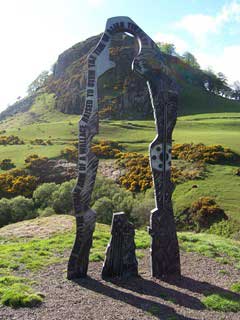IN THE FOOTSTEPS OF DAVID R. ROSS "LOUDON HILL" |
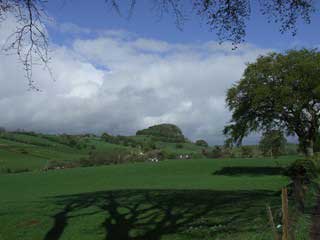 |
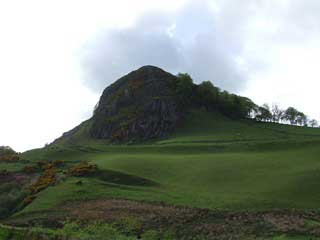 |
I had never heard of Loudoun Hill before, which is strange considering it has been the scene of three significant battles in Scottish history. Once more with my trusty copy of DESIRE LINES under my arm, off I went to explore. I headed to Kilmarnock until I saw signs for Darvel so I wouldn't get lost, but trust me, when you get in the vicinity you'll see Loudoun Hill, you can't miss it, it dominates the horizon for miles. |
 |
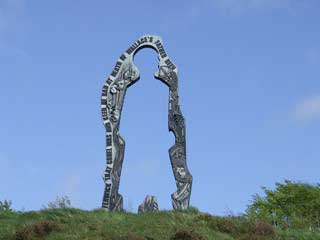 |
This monument to Wallace has had some critics but I like it. This unique sculpture, was created by local artist Richard Price. Part of Richard’s original idea for this sculpture was to draw attention to the Valley and its regeneration. Much of the work on the piece has been a labour of love by him and many of the parties involved, and the results are now here for others to enjoy and hopefully take pride in. Battles against tyranny evoke a powerful response whether they are current or historic. Many spirited and courageous people have fought for the freedoms, which we enjoy today. Perhaps this sculpture in a small way will remind us of their spirit and sacrifice. I think it does, apart from some of the writing on the statue which I thought was a wee bit too politically correct so as not to offend our English cousins!! Alien tyranny indeed!! |
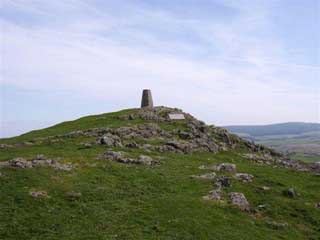 |
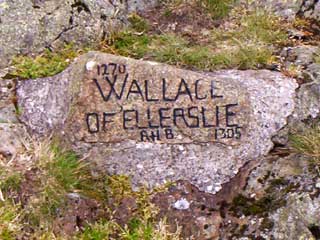 |
Perhaps the most famous battle was the "Battle of Loudoun Hill" in 1297 when William Wallace fought and won against the English with his successful ambush of King Edward I's baggage train. But there were another two battles, namely Robert the Bruce who in 1307 on 10th May, defeated one Aymer de Valence, with a much smaller force. There was also the battle between the Covenanters and Claverhouse at Drumclog in the shadow of Loudoun Hill in 1679 where again, the the goverment army outnumbered their enemy but the smaller force won. Perhaps there's something to be learned from Loudoun Hill, maybe Scotland could start playing their football here! |
|
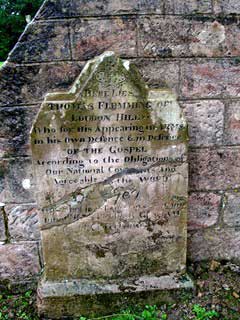 |
While here you could visit the Drumclog monument which isn't too far away, you could also visit the Louden Kirk whereThomas Fleming lies buried. Thomas was one of the few Covenanters who fell defending his faith against government forces at Drumclog. |
The Three Battles Of Loudoun Hill |
 |
Loudoun Hill marks the eastern end of the Irvine Valley. From its summit there is an extensive view over Ayrshire to the Firth of Clyde and Arran. The hill has witnessed the passage of history from the earliest times. An iron-age homestead is located at the foot of the south-east slope. Nearby at Allanton Beg a Roman fort was built. The current A71 is probably the line of the Roman road as it left the fort. Sir William Wallace defeated an English force at Loudoun Hill in 1296 and King Robert the Bruce inflicted greater punishment on the English in 1307. A large Conventicle (outdoor religious service) held in the vicinity in 1679 led on to the humiliation of Claverhouse by the covenanters at the battle of Drumclog. |
Wallace & the First Battle |
 |
A number of places in Loudoun and Galston parishes are associated with William Wallace, but Blind Harry in his epic poem “The Wallace” tells the story of Wallace’s ambush of the English at Loudoun Hill. The poem also tells how somewhere within the parish a hospitable innkeeper supplied the party of Scots as they prepared to intercept a convoy on route westward to Ayr
The actual battlesite was probably at the eastern entrance to the narrow pass known as the Winny Wizzen, it's strategic position at the head of the valley meant it was often passed by armies making their way inland or out to the coast. Wallace concealed his men behind the banks and ditches of the long abandoned Roman fort. The poem tells how the Scots made the way even narrower with the construction of stone dykes, making more effective the attack on the tightly packed riders. Wallace had only 50 men against 200 enemy soldiers but still managed to win the day, killing over 100 English troops including Fenwick (the English general who had killed Wallace’s father), the rest scattered and the baggage train, with all the |
| supplies including a large amount of useful armour, weapons and horses intended to relieve the garrison at Ayr, now fell into Scottish hands. A point marked on maps as Wallace’s Grave is traditionally believed to be the place where the English dead were buried. Wallace was declared an outlaw after the Battle of Loudoun Hill but pressed on to his great victory at Stirling Bridge the following year. September 2004 saw the unveiling of the "Spirit of Scotland" statute - to recognise the historical significance of the area during the Scottish Wars of Independence. |
Bruce & the Second Battle |
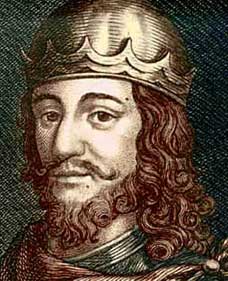 |
In 1307 on 10th May, eleven years after the first battle of Loudoun Hill, King Robert the Bruce adopted, almost exactly, the same site and tactics for another encounter with the English. Modern interpretation places the battlefield further east on the farm of Allanton plains, between the bog land on the north and Loch Gait, now drained, beside the Avon Water. By digging a series of trenches on either side he succeeded in narrowing the passage, forcing the English onto the difficult terrain between the bog and the loch. This would prevent a full frontal attack by the main English force of 3000 men and give the 500 to 600 Scots the best possible chance of victory. The commander of the English was an old foe, namely one Aymer de Valence, who Bruce was more than familiar with. |
John Barbour describes his actions in his rhyming chronicle;
The king's men met them at the dyke
|
The Covenanters & the Third Battle |
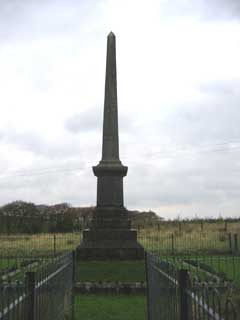 |
The Covenanters were a group of people who had signed The National Covenant (1638) in protest when King James I attempted to bring the Kirk into line with the Anglican Church, complete with its hierarchy of Bishops and the English prayer book. The King responded by sending in the army. The Covenanters easily defeated them at the Battle Of Berwick and the army crossed into England and took Newcastle. Charles I conceded to their demands but with the King weakened the Parliamentarians rose up and civil war began. The Parliamentarians asked for Scottish aid and an alliance was founded. The Solemn League and Covenant was signed so that presbyterianism was able to be fostered in England. This tipped the balance, the Royalists were defeated, and the King executed. Cromwell, however, saw the Scots as a threat and invaded and occupied the country. When he died in 1658 his son and successor proved to be a weak ruler and the monarchy was restored to Charles II who began where his father had left off, in the persecution of the Scottish faith, following Cromwell's example. John Graham of Claverhouse, commander of government troops in south-west Scotland, received information that a large conventicle (outlawed outdoor religious |
|
 |
© Paisley Tartan Army 2008-09

